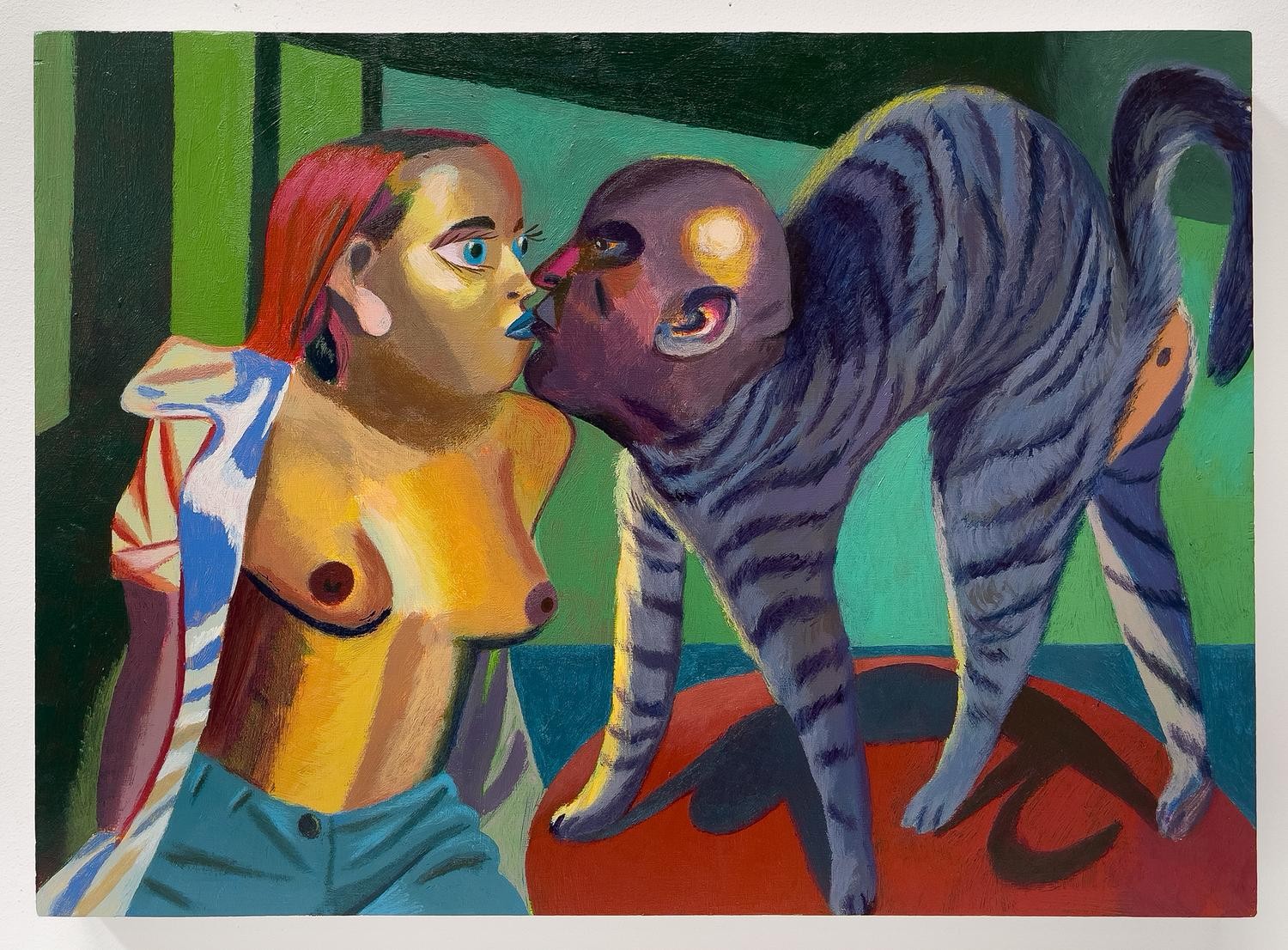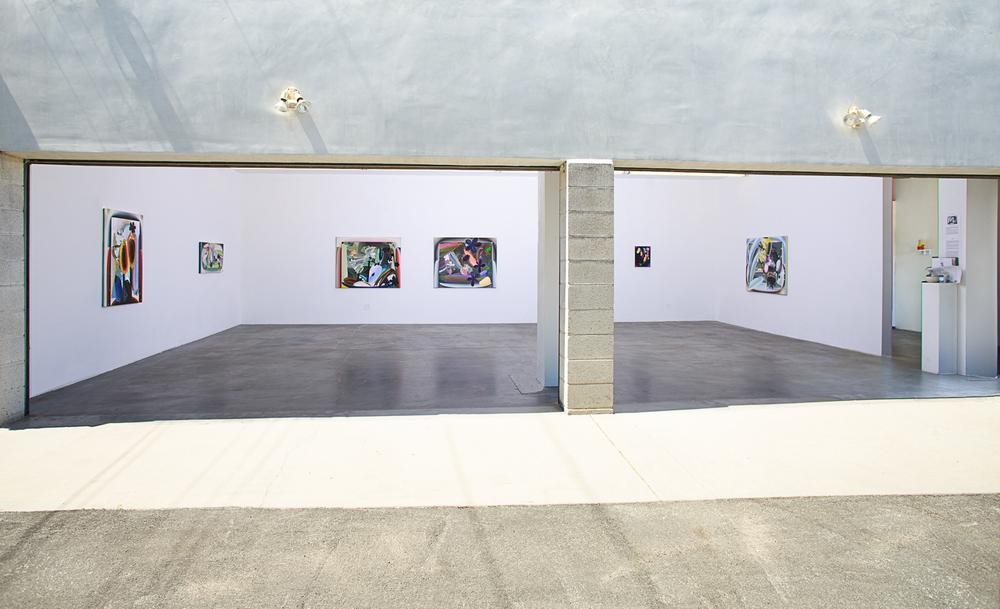Morteza Khakshoor
“Tender just like a riot”
Acrylic on wooden panel
24 x 20”
2022
Stubbly Numbness
- Morteza Khakshoor
“..Khakshoor mines the endless surprises and possibilities in Picasso’s oeuvre. But unlike Hockney’s earnest approach, Khakshoor strips them for parts, injecting humor, absurdity, and tragedy in their reapplication towards new ambiguous, but strident configurations”
Morteza Khakshoor works with a range of subjects, but it’s his attention to the male––in all his foibles, struggles, and pathos––that remains a salient feature of his output. As frequent protagonists in his paintings, like all of his subjects, they result from circuitous paths through found images and memories, seen and remembered, or invented from whole cloth. His consumption of these images feed into his daily drawing practice, which in turn, metabolizes disparate information into schema for paintings at once playfully tragic and colorfully dark.
Raised in Iran where, until college, boys and girls attended separate schools, Khakshoor was immersed in testosterone-laden campuses, which he calls the ‘homo-social ’–– particularly in those catering to the unbehaved. As he progressed to co-ed college in male-only dormitories, Khakshoor was exposed to higher stakes in the homo-social environment, in which boundaries were pushed, rules were constantly broken, and chaos loomed through state provocations of the student body. He observed the Shakespearean tragedy in his male cohort, captured in all those productions by Orson Welles, Akira Kurosawa, and Laurence Olivier he had seen on television as a child. Even if he barely understood these films at the time, he had already begun to look at men with an obsessional, yet fearful fascination––for what they were capable of and for being a male himself.
Case in point: In Confessor (2022) he depicts the head of a young man in tones of olive green and pale yellow. Derived from his memory of watching a fellow college student being forced to condemn himself and his beliefs on live state television, Khakshoor incorporates slight echoes of what is arguably the most radical innovation in twentieth century painting, cubism, into the depiction of a live emasculation by the patriarchal state, a tradition that still continues in Iran.
Works like Heap of Flies (2021) take on more mytho-poetic dimensions: a woman and a man are seen in front of a building commonly seen in Tehran before the 1978-1979 Islamic Revolution, whose origins stem from a robust architectural movement influenced by Western and Persian architecture. The man’s mouth is curiously agape as a number of flies swarm around him. Fairy tales abound which transform men into aquatic animals or vice versa. The building’s role thus becomes estranged and fabled by association.
Khakshoor frequently turns to Iranian history for content, but his formal influences are decidedly Western. He cites Picasso, Beckman, Mantegna, and Hockney as perennial favorites. Akin to Hockney, Khakshoor mines the endless surprises and possibilities in Picasso’s oeuvre. But unlike Hockney’s earnest approach, Khakshoor strips them for parts, injecting humor, absurdity, and tragedy in their reapplication towards new ambiguous, but strident configurations
Gallery Weekend Events
1–4pm
Artist walk through: Morteza Khakshoor
310 497 6895
info@emmagrayhq.com
Saturday 12–4pm and by appointment every day


